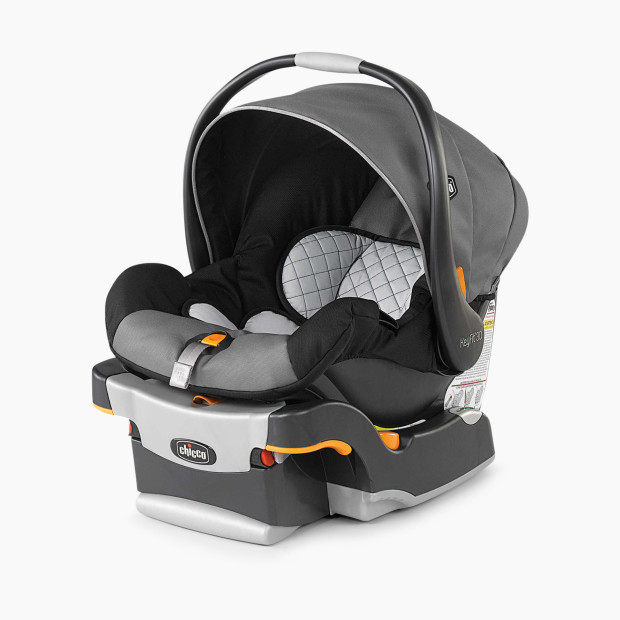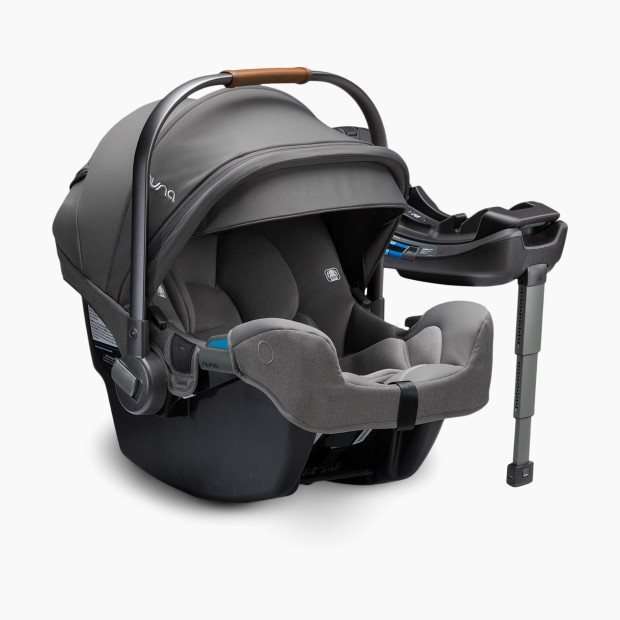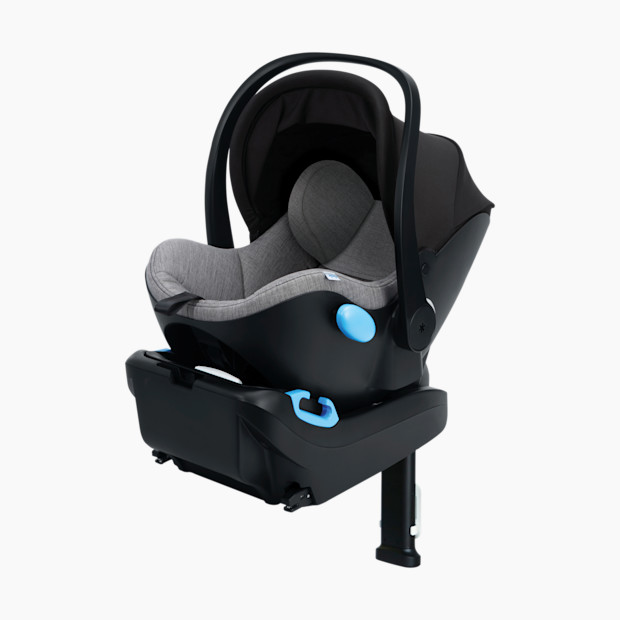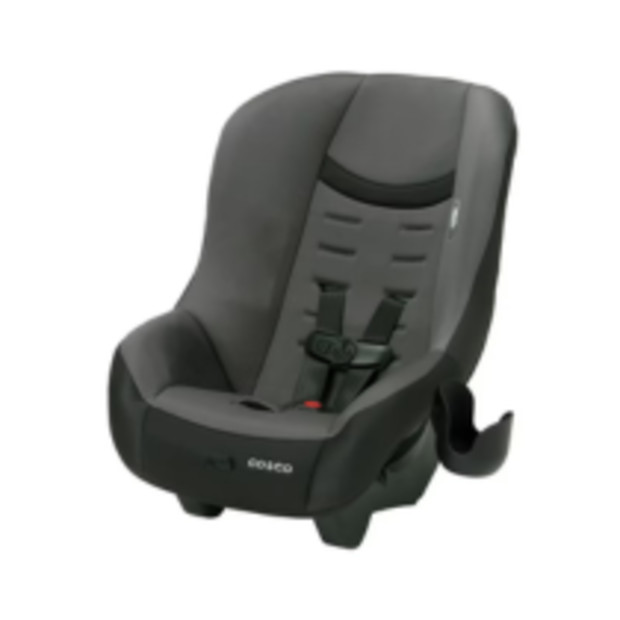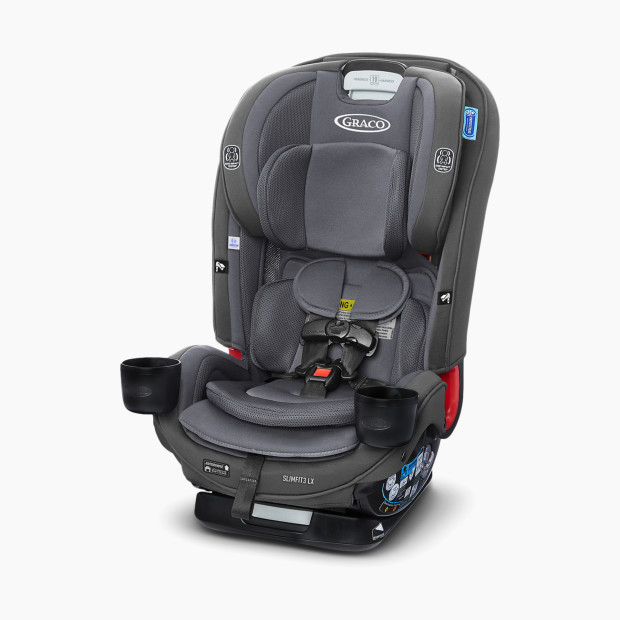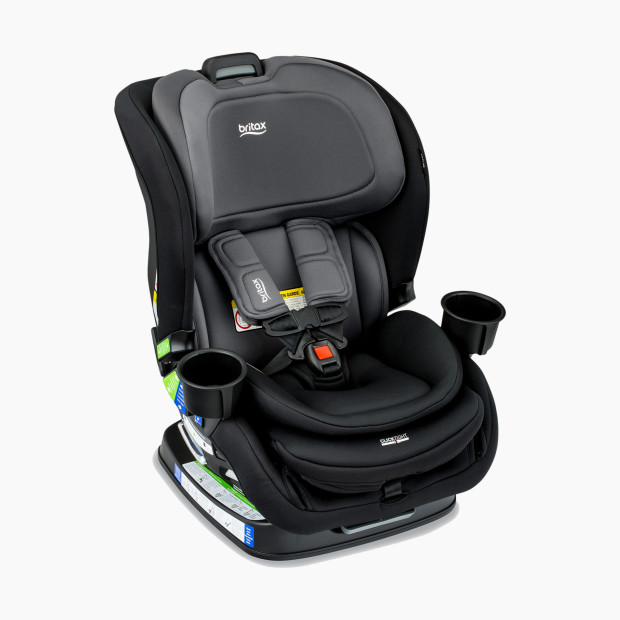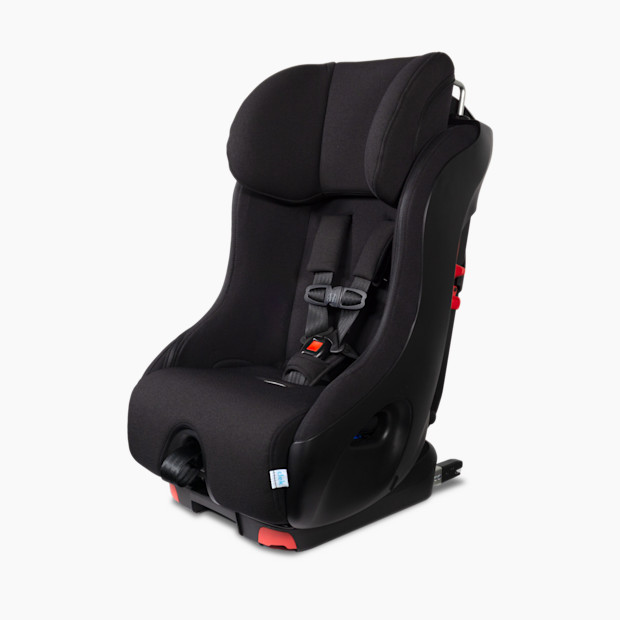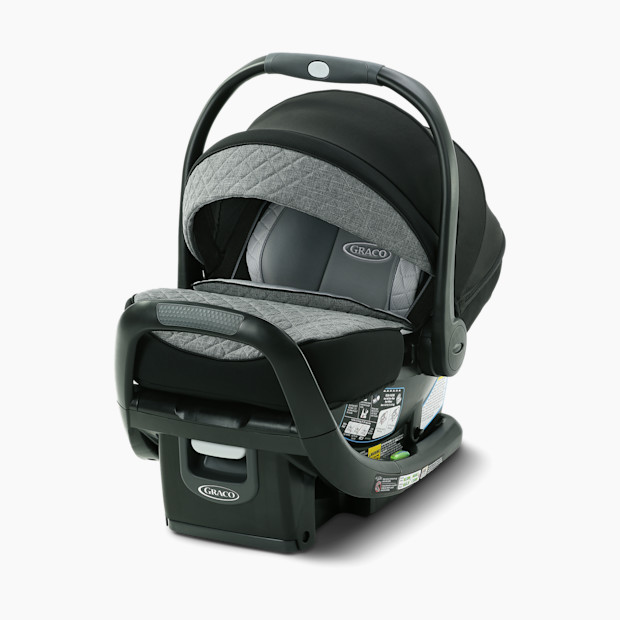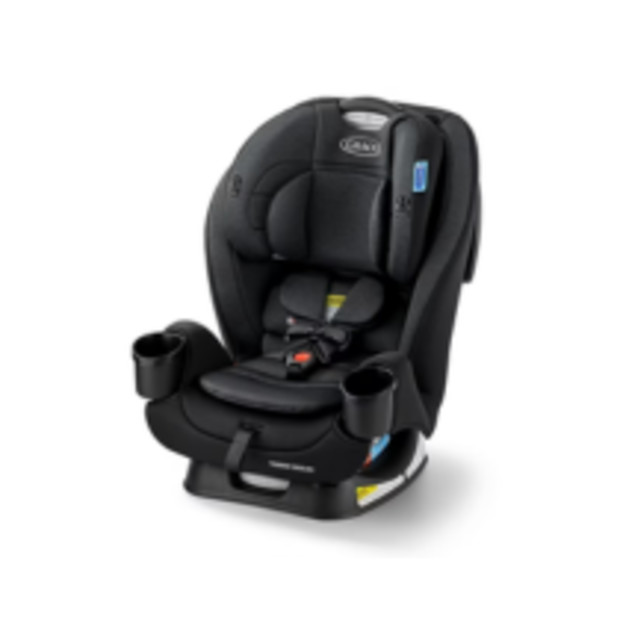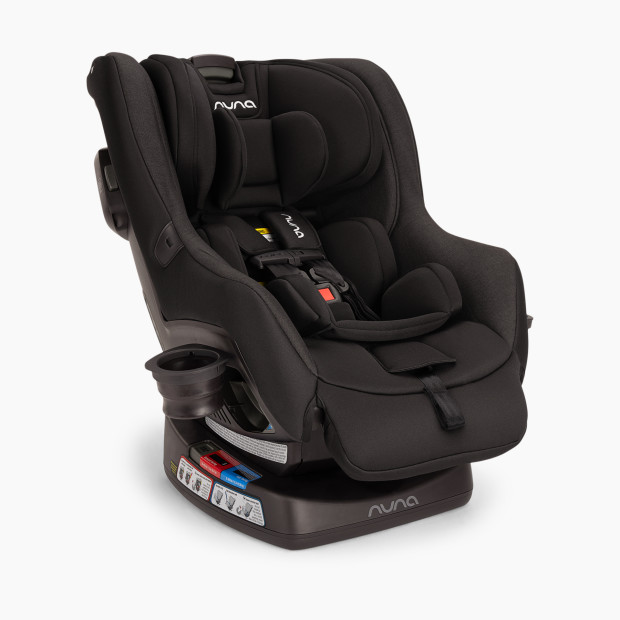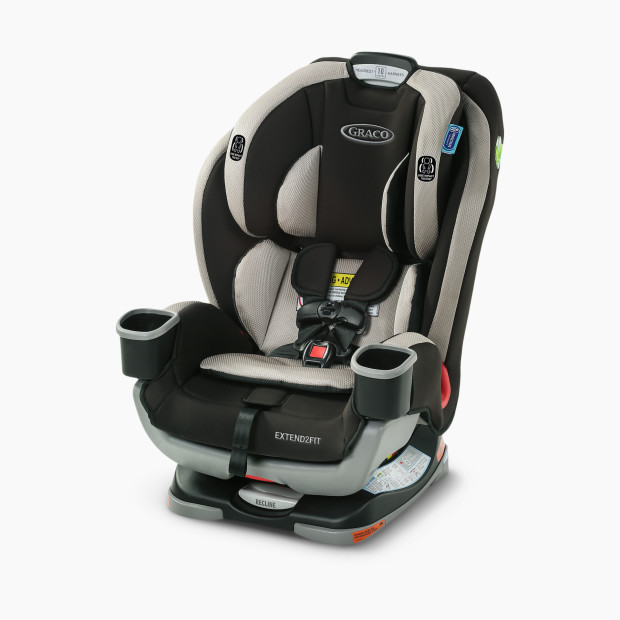
Will the Car Seat I Want Work with My Car?
Not all cars + car seats are compatible. Learn how to know if yours is a match before you commit to a seat.

By Jen LaBracio, CPST
Fact Checked by Shannon Vestal Robson
In This Article
Infant versus convertible, no-rethread harness, anti-rebound bar, LATCH, flame retardant-free fabric…car seats speak their own language, and most parents-to-be spend a lot of time researching the seat they want to add to their baby registry. But there’s one big thing they often overlook: if the car seat they love is compatible with the car they drive.
As a Child Passenger Safety Technician (a CPST, someone who’s specially trained in car seat use and education), I encourage parents to learn as much as they can about the seat they plan to use—its safety features, weight and height requirements, how to install it properly, etc. But it’s just as important to consider vehicle compatibility. Not all cars fit all car seats, and doing a bit of research upfront can save you the hassle of having to return or replace a seat that doesn’t work in your particular car.
We recently polled Babylist users about the cars they own and realized there are a lot of factors that might affect how a car seat would fit in some of the most popular models, so we’re outlining the most important things to think about in your family car that might affect what car seat you should buy.
Vehicle Car Seat Compatibility Features
There are three main things to consider about your car before deciding on a car seat:
The size of the back seat
Your vehicle’s headrests
The car’s LATCH system
1. Size of the back seat
The size of the car you drive matters when selecting and installing a car seat, but the size of your back seat matters the most. That’s because just like cars, car seats come in all different sizes, and it can be tough to tell if the car seat you love will fit in your back seat without doing a bit of homework.
“Parents may buy a car pre-car seats and think, ‘Wow, there's so much room back here!’ and then go to install a rear-facing car seat and realize that the back seat is actually a lot smaller than they think,” says Emma Whisnant, a CPST and a Safe Kids volunteer who has seen just about every combination of car seat + car in her work helping families find the best car seat to fit their needs.
The size of your back seat matters the most if you drive a compact car or if you plan to use a convertible car seat from birth. (Most convertible car seats need to be on the steepest recline level for newborn use, which means they’ll take up more space front-to-back.) However, you can’t judge the back seat on car size alone; certain cars look big and roomy with the naked eye but actually have fairly tight back seats for car seats.
“The Mazda CX-3 and CX-5 are both good examples,” notes Whisnant, both popular cars among Babylist families, according to our poll. “They have tiny back seats for car seats even though I can sit somewhat comfortably as a 5'9" adult.” (The middle seat on the CX-5 is also significantly shallower than the side seats, which can also pose a problem if you’re trying to install a car seat there, especially forward-facing.)
She noted a few other examples of cars with smaller back seats than they initially appear, including:
Select Mercedes SUVs
Volvo XC models (minus the XC90)
Third-row seating in many vehicles, but notably the GMC Yukon
Pay attention both to the width of your vehicle’s back seat and the distance between the backs of the front seats and the backs of the back seats, as both impact the fit of a car seat.
To find the approximate depth of your back seat, measure between the back of the front seat and the back of the seat pan. Remember to adjust the front seat to a comfortable position for either a driver or a passenger (depending on where you plan to install your car seat) before you measure. (Photo: Jen LaBracio, Babylist Senior Gear Editor.)
You’ll also want to pay attention to driver height. Taller drivers need their seats farther back, meaning less room front-to-back in the back seat and less space for a car seat. (Whether or not your rear-facing car seat can touch the seat in front of it—and how closely—varies by manufacturer, so always consult your manual.)
The Toyota RAV4, the most popular car among Babylist users who answered our poll, is a good example of this; it’s fairly compact front-to-back and may not work with rear-facing seats that require a deep recline.
🚩 Before you decide on a car seat:
Measure the width and length of your vehicle’s back seat. (Don’t forget to factor in the height of the driver(s) and adjust the seats accordingly when you measure.)
Check these measurements against the car seat’s specs, specifically the seat’s width and length, to get an idea of fit.
If you’re planning on using an infant car seat, don’t forget to account for the seat’s base, which may protrude farther out than the carrier portion of the seat.
Note that fit is not always an exact science; sometimes, measurements alone aren’t the be-all and end-all of how a car seat will fit in a particular vehicle. But it’s a good place to start.
And one more thing to think about: family size. If you already have multiple children or plan to in the future, the size of your back seat is even more significant. “There are some back seats that may fit two seats nicely, but there simply isn't a way to squeeze in a third person,” notes Whisnant. “And although many cars will fit three seats, you'll be limited to a select few brands that sell extremely narrow seats.”
The Best Narrow Car Seats
These seats have a narrow width, making them ideal for smaller back seats or for three-across.
The Best Compact Car Seats Front-to-Back
These car seats are compact front-to-back and work well in compact cars or if you need to install them behind a tall driver or passenger.
2. Headrests
Have you ever thought about your car’s headrests? (Probably not.) A safety feature to prevent or decrease head injury in a crash, most headrests adjust up and down and even pop off completely. But some, called nonremovable headrests, don’t come off at all—and that can pose a big issue for car seat installation.
“Headrests are simply not something many people even consider when looking at a car,” says Whisnant. “There are many cars out there that have large, protruding headrests that cannot be removed. This is fine when the child is rear-facing, but once you want to turn the seat around forward-facing, you may have an issue,” she explains.
A protruding headrest often creates a gap between the back of the car seat and the back of the vehicle seat, and that’s not allowed by all car seat manufacturers or all vehicle manufacturers. (This is especially true for high-back booster seats.) A nonremovable headrest can also prevent a car seat’s head restraint from being raised high enough to properly adjust the harness for the fit of your child when used forward-facing.
Each car seat manufacturer and vehicle manufacturer has their own rules around car seat gaps. In this example, Chicco allows a gap but ONLY if the shell of the car seat is not resting solely on the vehicle headrest. In this example, because the headrest of this GMC Acadia is removable, a safe installation was possible by removing the vehicle's headrest. However, in a vehicle with a nonremovable headrest, this may not always be possible. (Tip: If possible, try reclining the vehicle seat or the car seat's back to get the car seat to fit under a vehicle headrest.) (Photo: Courtney Barry, Chicco.)
If you own a car with nonremovable headrests, you’ll have to be sure the car seat or booster you choose allows for a gap and doesn’t interfere with the vehicle headrest when fully extended.
Some popular cars with nonremovable headrests include:
Honda Civic
Toyota Camry
Chrysler Pacifica
Jeep Grand Cherokee
Some Tesla models
Some car seat manufacturers that consistently allow a gap in harness mode (so they’ll likely work if your car has a nonremovable headrest) include:
Graco
Nuna
Clek
And there’s one more caveat to keep in mind. “High-back boosters also have this same rule, but just because the manufacturer allowed the gap in harness mode doesn't mean they'll allow it in booster mode,” Whisnant explains. “Graco is guilty of this; there is no gap allowed in booster mode, so if you bought a seat from them for your car with a fixed headrest, you won't be able to use it in highback booster mode.” (Brands that allow their dedicated booster seats to be used with a gap are Diono, Nuna, Clek and Evenflo.)
🚩 Before you decide on a car seat:
Check your vehicle: Are the headrests removable?
Check your vehicle manual: Does your manufacturer allow for a gap between a car seat and the vehicle seat back?
Check your car seat manual: Does the car seat manufacturer allow for a gap between the car seat and the vehicle seat back? (Car seat manuals are all available on the brands’ websites, so check there if you don’t already own the car seat.)
3. LATCH
LATCH is an acronym for Lower Anchors and Tethers for CHildren. An attachment system created to simplify car seat installation, a vehicle’s LATCH system is made up of two lower anchors and one tether anchor. You’ll find at least two complete LATCH systems (and one additional tether anchor) in most vehicles made after September 2002, usually behind both the driver’s and passenger’s seats, and less often also in the middle seat.
If you only need to transport one child, drive a standard two-row car or don’t regularly have anyone else riding in your back seat, you don’t have to worry too much about the number of lower anchors in your vehicle and where they’re located. But if you have multiple kids, limited back seat space or are planning on buying a vehicle with a third row, it is something to pay attention to. These are some common scenarios:
Many vans and third-row vehicles don’t have lower anchors in the third row. While you can still install a car seat using the vehicle’s seat belt, many parents find this inconvenient. “The Chrysler Town & Country and Dodge Caravan are two examples notorious for only having three anchors in the entire van, despite having five back seating positions,” explains Whisnant.
Many vehicles also don’t have lower anchors in the middle seating position in the back seat. Again, you can use a seat belt install in these instances, but it is something to be aware of.
Some manufacturers add a single fifth lower anchor to their middle seat, but when in use, the car seat ends up sitting halfway between the middle seat and the driver’s seat, making the car a four-seater. According to Whisnant, the Toyota RAV4 and late-model Subaru Outbacks—the second most popular car among Babylist users, according to our poll—are common examples of cars with these fifth anchors.
🚩 Before you decide on a car seat:
Do some LATCH recon! Head to your car and locate the lower anchors.
Read your vehicle manual and the manual of the car seat you’re hoping to use. They’ll provide information on LATCH locations and proper use, the car seat manufacturer’s preferred installation methods (LATCH versus seat belt installation) and more.
Also consider: Overlapping seat belts
Of all the vehicle + car seat compatibility issues to think through, this one is lower on the list, and isn’t a concern unless you have multiple passengers riding in your back seat—but it is still worthwhile to learn about.
There are a few cars that have something called overlapping seat belts, where the middle seat belt overlaps the buckle for the outboard seating position and lower anchor. “This means two car seats cannot be installed next to each other safely most of the time,” says Whisnant, turning what should be a three-passenger back seat into a two-passenger. (Car Seats for the Littles, a nonprofit organization staffed by CPSTs, has a great visual on overlapping seat belts in their Choosing a New Vehicle guide.)
The 2013-2018 Toyota RAV4, the most popular car among Babylist users who answered our poll, is a good example of this. Because of the overlapping seat belts, there’s no safe way to have two riders directly next to each other in the back seat if one is riding in the center.
A few examples of other cars with overlapping seat belts include:
2012-2021 Honda CR-V
2015-18 Lexus NX
2014-2020 Nissan Rogue
While there isn’t much you can do car seat-wise if you already own a car with overlapping seat belts, it is something to think about if you know you want more than one child and are considering purchasing a new vehicle.
🚘 Babylist Parents’ Most Popular Cars
Curious about what other parents are driving? To help us write this story, we polled 2,000 Babylist parents and asked them the make and model of their family car. Here’s what came out on top:
Toyota RAV4
Honda CRV
Subaru Outback
Subaru Forester
Mazda CX5
